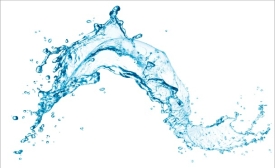science diplomacy
The Ministry of Science, Industry and Technology and the Foreign Ministry have introduced a new field in diplomacy called “science diplomacy,” in which Turkey will be assigning “science attachés” to technologically developed countries.
Not much imagination is required to appreciate the impact in Indonesia of Barack Obama‘s recent visit. There he was, using phrases of the Indonesian language not like some stumbling tourist but rather as one who has real roots in the nation. His reminiscences of his boyhood exploits stirred the spirits of this rising Pacific power that can claim the President of the United States as one of its o
Unlike Augustan Rome, the Song Dynasty that inspired Qingming Shanghe Tu exerted a different kind of power.... Its entrepreneurs and scholars invented technologies still in use today, technologies that enabled widespread education, encouraged trade and travel, inspired artistic excellence and not only tolerated but encouraged diversity and openness.
Science diplomacy is a central component of America’s twenty-first century statecraft agenda. The United States must increasingly recognize the vital role science and technology can play in addressing major challenges, such as making our economy more competitive...
On Monday, February 27, 2012, the USC Center on Public Diplomacy (CPD) hosted a major research conference on Water Diplomacy which sought to address three public diplomacy objectives in the area of water diplomacy: listening, implementation and policy development.

The USC Center on Public Diplomacy hosted a major conference on water diplomacy. Water is essential to humankind’s existence, is increasingly unavailable because of pollution, failure to develop conservation programs, and mismanagement of water resources. During the near future, water shortages could lead to conflict in many parts of the world.
With so many global challenges, where can the biggest impact be made on global publics? How can the case for public diplomacy be made more effectively to governments, corporations, NGOs and individuals? We can start by tackling the most pressing global issue—water. Water is essential for human life and although we are a blue planet, water is a scarce resource. More than one billion people do not have access to safe water.
Today, government and private sector leaders gathered at the White House to highlight progress in answering President Obama’s call to use science, technology and innovation to promote global development.







